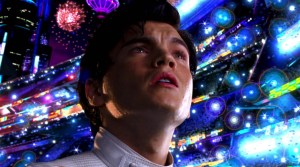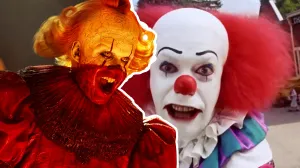Just before Christmas this year, stargazers will be treated to a very rare celestial event. On December 21 — the winter solstice — the “Christmas Star” will appear in the sky for the first time in nearly 800 years thanks to the conjunction of two of the Solar System’s biggest planets, Jupiter and Saturn. On that night, the two planets will line up at the closet point in their orbit for the first time in Earth’s vantage point since the Middle Ages.
Videos by ComicBook.com
On December 21st, those looking into the southwestern horizon at the right time — specifically right after sunset and near the constellation Capricorn — the two planets will be close enough together that they will appear in a bright, star-like formation, something that is also referred to as a “double planet”. While the phenomenon is generally not that rare it’s how close they are that makes this particular conjunction so spectacular.
“Alignments between these two planets are rather rare, occurring once every 20 years or so, but this conjunction is exceptionally rare because of how close the planets will appear to one another, Rice University astronomer Patrick Hartigan told USA Today.
How rare? The last similar conjunction visible from Earth took place in 1226.
“You’d have to go all the way back to just before dawn on March 4, 1226, to see a closer alignment between these objects visible in the night sky.”
The previous conjunction of Jupiter and Saturn that was as close as the one that will be visible December 21st took place in 1623, but the planets were too near the sun at that time to be seen on Earth. Over the centuries, some have theorized that this sort of conjunction between the two gas giants is what the Nativity Story calls the Star of Bethlehem or the Christmas Star.
What’s especially interesting about the upcoming conjunction, however, is that those watching the skies can actually track the event as it approaches. Both planets are currently visible in the night sky and for those keeping watch, they’ll actually be able to see the planets shifting in position as their orbits continue — though Saturn is the fainter of the two lights due to being further from Earth.
Over the next couple of weeks, you can watch them move which is super cool, because you’re actually seeing planets in orbit,” Hartigan said.
Hartigan also explained that while the conjunction is a spectacular event, you’ll want to be mindful of timing as well as ensure you have a good viewing spot free of obstacles, such as tall buildings or mountains as the two planets will be visible on the low horizon with optimal viewing time around 15-20 minutes after dark. And if you’re unable to witness the maximum conjunction on the 21st, you still aren’t completely out of luck. The planets will be close together just generally between December 16th and December 25th. And for kids, this may not be the only close conjunction of their lifetimes. Another one will take place in the early morning of March 15, 2080.
Will you be checking out the “Christmas Star” on December 21st? Let us know in the comments.
Photo: NurPhoto/NurPhoto via Getty Images








